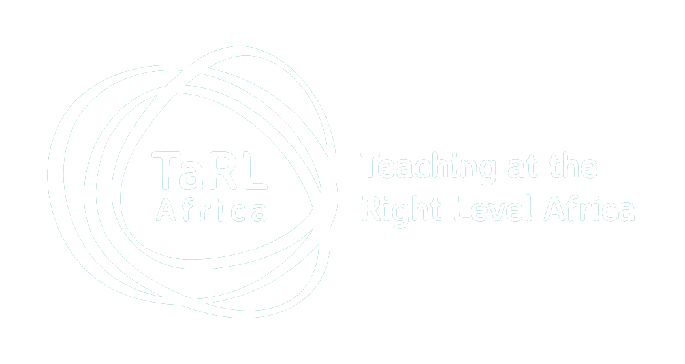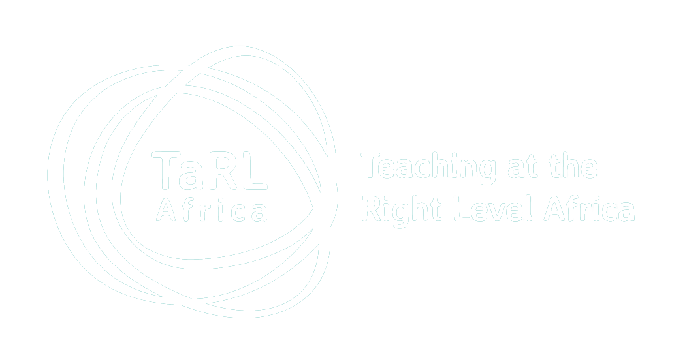
Although enrolment in school has increased over the years, learning levels remain low. In Nigeria for example, in spite of the various support efforts by both international and local NGOs, a 2015 report by the Nigeria Education Data Survey (NEDS) puts the literacy and numeracy rates of Nigerian primary school children at 48.4% and 54.5% respectively. The report is worrisome when we look at the rate in the foundational years P1 to P3. It shows that the literacy rate of Nigerian children stood at 27.6%, 40.8% and 54.4% for P1, P2 and P3 in that order.
I joined Teaching at the Right Level (TaRL) Africa’s Nigeria team in March 2020 and have observed that the TaRL approach is a clear departure from the status quo. TaRL has a reputation for transforming children’s learning in a space of 50 days. In 2018-19, the Borno State Government, with support from Plan International, UNICEF, DFID, and TaRL Africa, led a 12-school pilot reaching over 8,000 children – developing an important demonstration case as the first TaRL pilot in a conflict setting. Reading increased by 17 percentage points. The result is highlighted below:
- 31% increase in proportion of children able to read a 4-line paragraph in local language.
- 51% increase in reading letters.
- 31% increase in reading paragraphs.
- 48% increase in proficiency in subtraction.
Also, TaRL is currently being implemented as a pilot in two Local Government Areas of Kano with promising results.
What’s different about TaRL?
Before joining the TaRL Africa team, I worked in the Education sector in Nigeria for over thirty years. I’ve noticed that the TaRL approach is unique because it places children at the centre of its programme. Previous efforts I was exposed to placed emphasis on strengthening the capacity of teachers without giving equal attention to the learners. Unlike the TaRL approach, they often began with an assessment of teachers’ capacity/quality without any attempt on finding out the learning levels of learners before the programmes were rolled out. The TaRL approach emphasises that teaching should start at the level of the child and it focuses on helping children gain foundational reading, understanding, expressing as well as arithmetic skills which are the building blocks for moving children forward. TaRL also groups children by learning level rather than by grade or age, thus allowing teachers to focus on helping children learn foundations. The materials used to teach stories are designed to align with the specific environments where they are being used.
One of the core elements that make TaRL stand out is assessment. TaRL does not begin without first carrying out an assessment which aims at determining pupils’ current learning levels. On a visit to a primary school in Kano, I witnessed first-hand that the assessments are simple and easy to use. It is quick and conducted in a non-threatening way whereby the teacher/assessor and the pupil sit one-on-one and side-by-side. Unlike regular assessments that use pen and paper, TaRL’s assessment is oral and focuses on understanding each child’s foundational skill level. Apart from using the assessment to group pupils initially, it is also used to track progress periodically. It is an instrument for course correction and future planning.
From close observation, another element that makes TaRL stand out is mentoring and support. Apart from the robust training from Master Trainers, teachers/facilitators receive further mentoring and monitoring support from leaders of practice. This is a clear departure from approaches where teachers are gathered, trained and dispersed without further follow-up support. School Support Officers (SSOs) and Head teachers provide school-based mentoring support to teacher/facilitators thereby acting as leaders of practice. These leaders of practice must teach for a period of between 15 and 20 days before they can give effective support to teachers/facilitators.
In conclusion, on the strength of the above, it is no wonder that the TaRL methodology is gaining wide acceptance. This is because it is transforming education at the basic level by supporting P4 to P6 pupils to mitigate the gaps that exist in the skills they ought to have acquired from P1 to P3 and equipping them with basic foundational skills for Literacy and Numeracy.


What’s up everyone, it’s my first visit at this website, and paragraph is
truly fruitful designed for me, keep up posting these types of articles.
From the write-up above, it is clear that TARL’s approaches are sustainable and this what the Nigerian child needs in this time and age. Please keep up the good work TARL Africa!